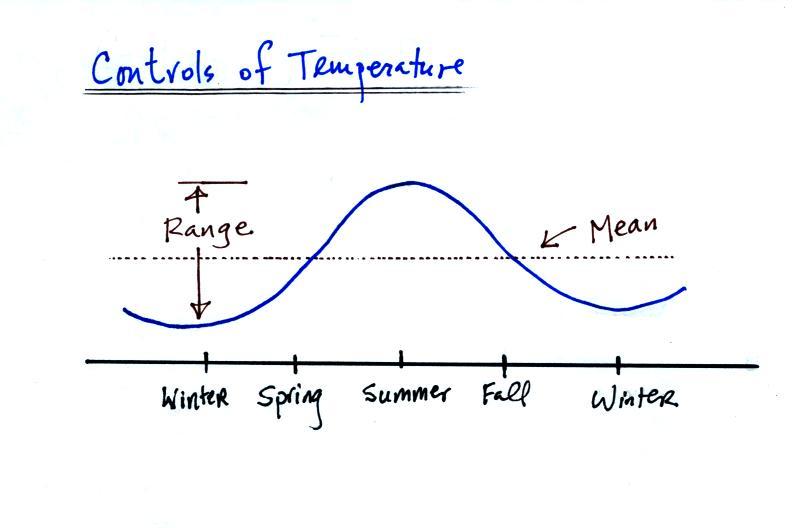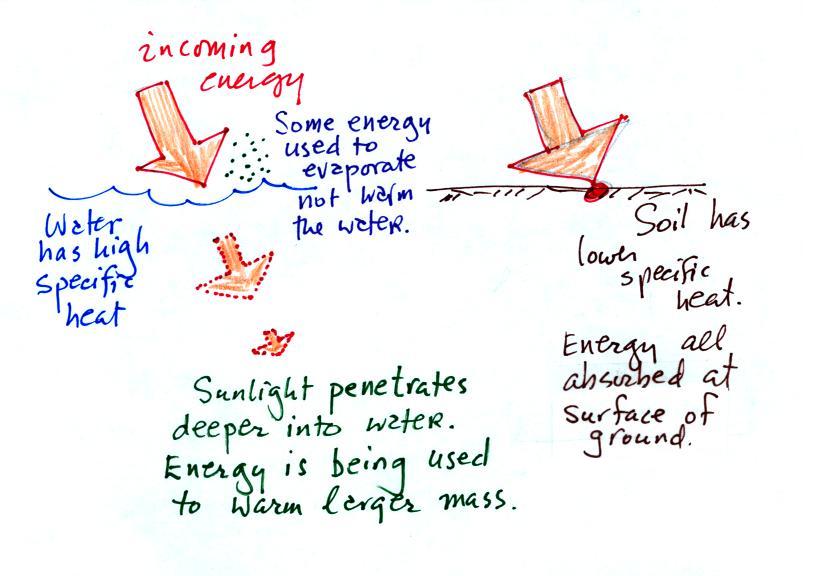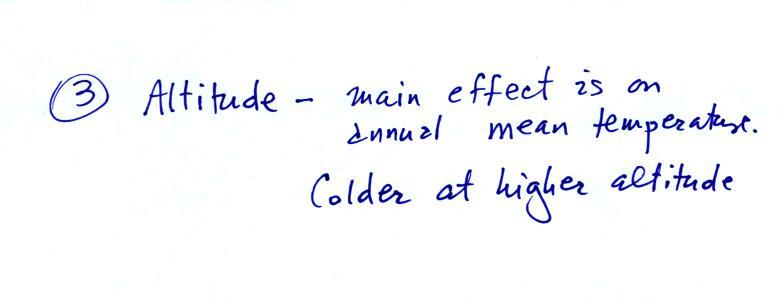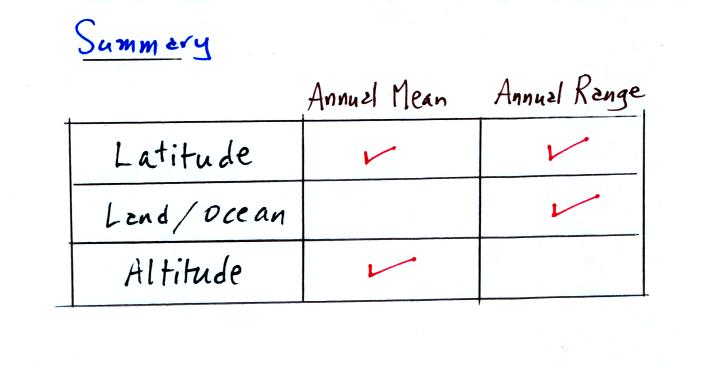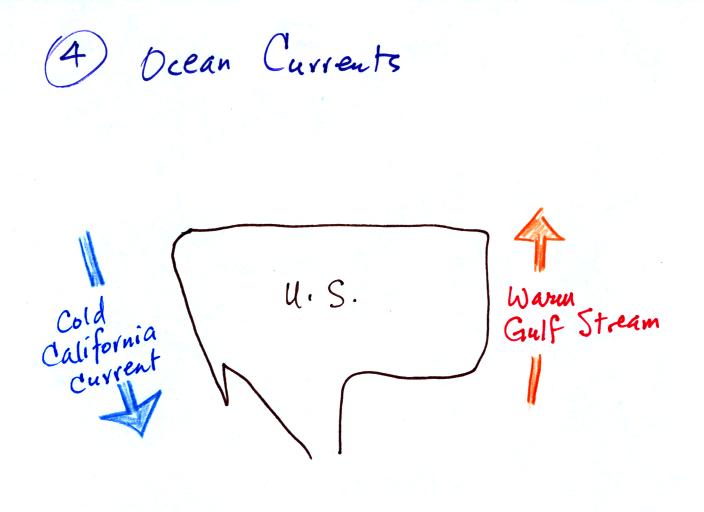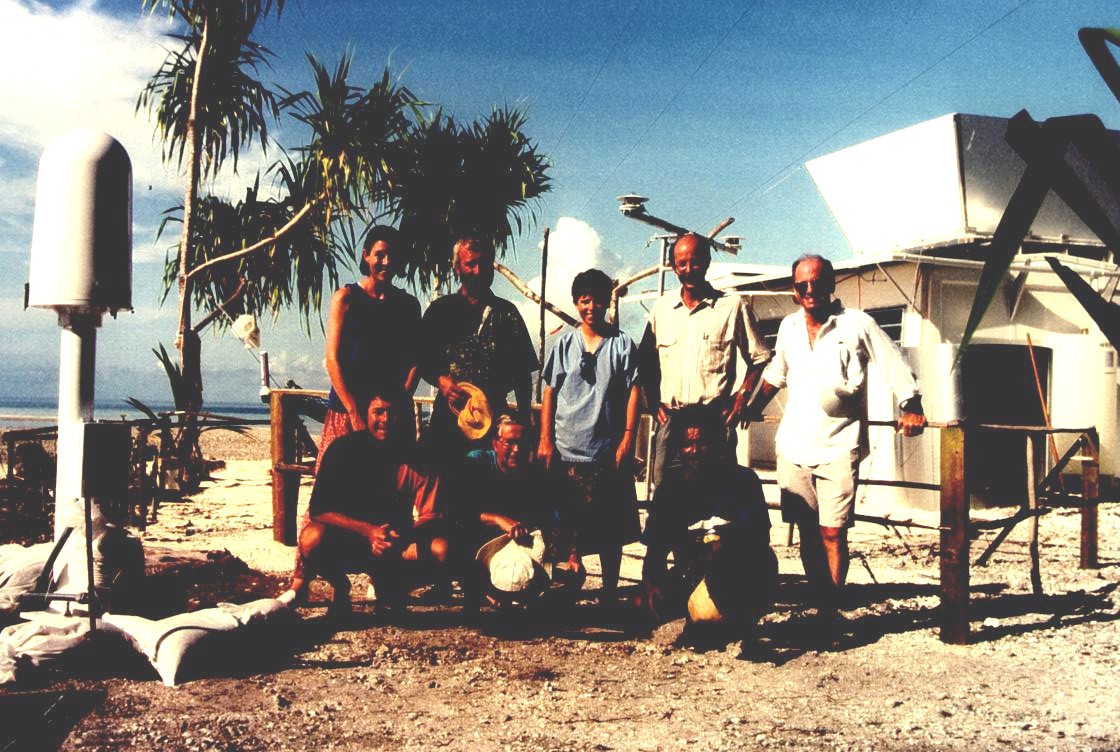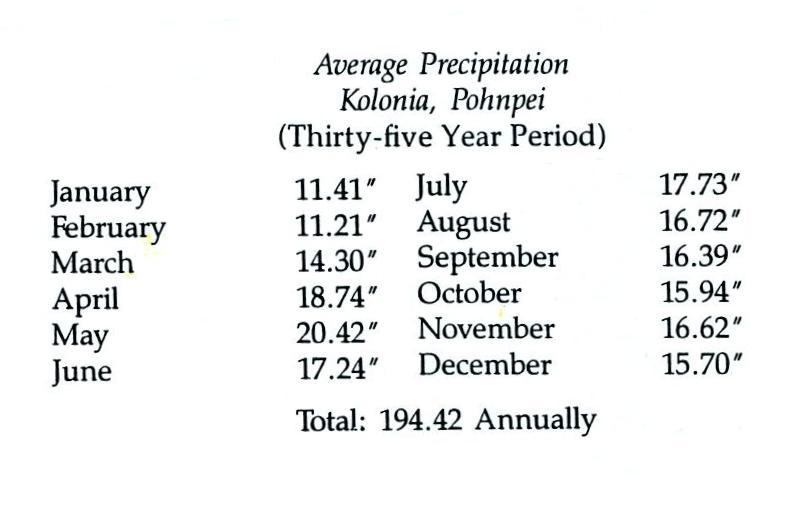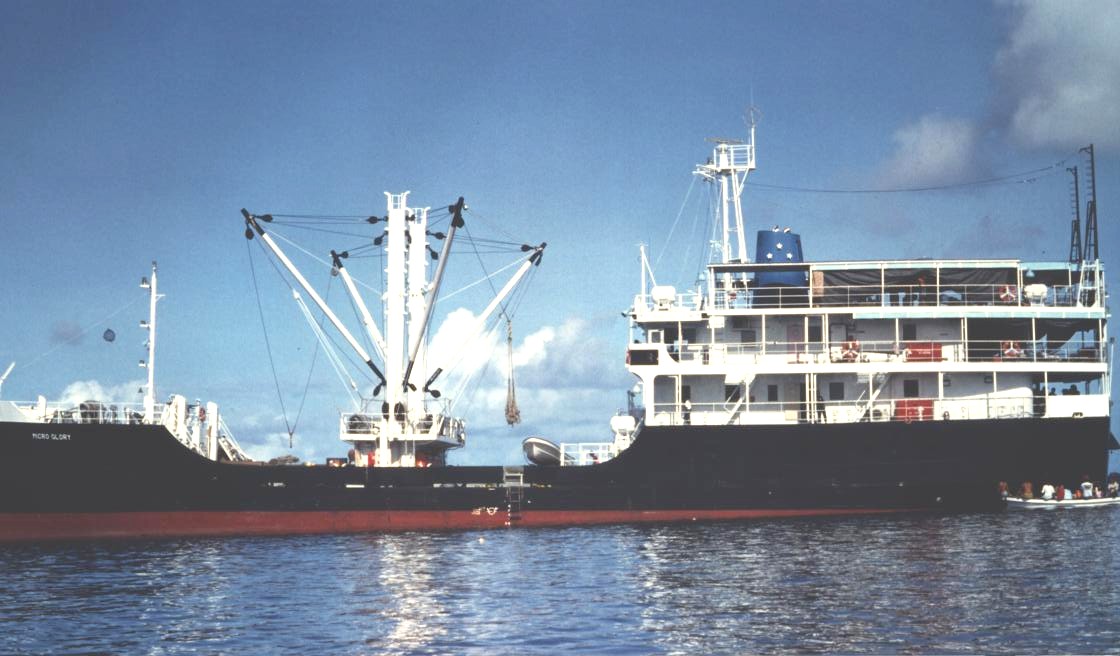Monday Mar. 10, 2014
We'll be talking about Micronesia near the end of today's class
and Spring Break is looming on the horizon. So some music
with a tropical theme seemed appropriate: Israel
Kamakawiwo'ole "Over the
Rainbow/What a Wonderful World" and
"Ka Huila Wai".
An Optional Assignment was collected today. You should
definitely review the answers that
are now online before this week's quiz.
The Experiment #2 reports have been graded. Normally you
would have two weeks to turn in a revised report but that would
mean a Mon., Mar. 24 due date (the Monday after Spring Break) so
I'll give you until Fri., Mar. 28. Please return the
original report with your revised report. And note you don't
have to revise your report if you're happy with the present grade.
And there was an In-Class
Optional Assignment today. If you would like to
download the assignment and turn it in before the quiz on
Wednesday you can earn at least partial credit.
A little bit of a detour in class today
How would you describe Tucson's climate? Hot and
dry? You're basically conveying information about
temperature and precipitation. Here we'll just concern
ourselves with temperature. It does get pretty hot in
Tucson in the summer. But it doesn't stay hot all
year. With just two numbers, (i) the annual mean or
annual average temperature and (ii) the annual range of
temperature you can give someone a pretty complete idea of the
temperature in Tucson and how it changes during the
year. More detailed statistics for Tucson are available
at this Tucson
climate data link.
There are three or four main factors that determine a region's
annual mean and annual temperature range.
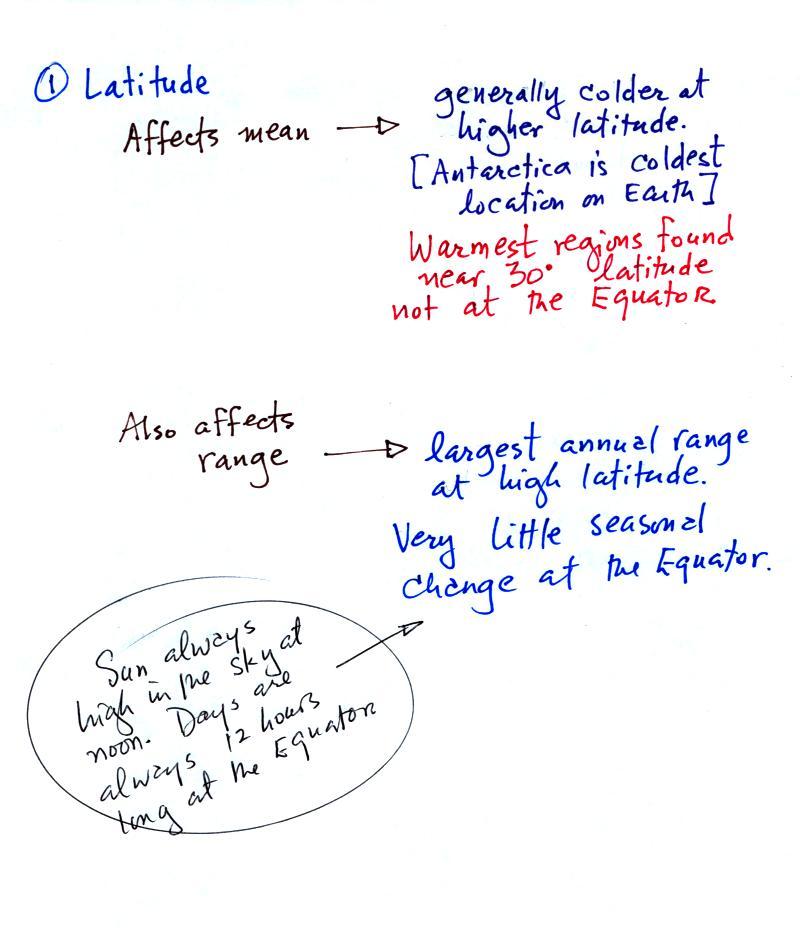
Latitude affects both the annual mean and the annual range of
temperature. The polar regions have colder annual
average temperatures than any other location on earth.
As we'll see, some of the other controls of temperature work
together with high latitude to make Antarctica and the South
Pole colder than the North Pole. The hottest regions on
earth are found near 30 latitude, not at the Equator (you'll
find some discussion of this on pps. 79 and 80 in the
photocopied ClassNotes which was part of the Causes of the
Seasons 1S1P topic but wasn't discussed in class)
The annual range of temperature increases with increasing
latitude. There is little or no seasonal change at the
Equator.
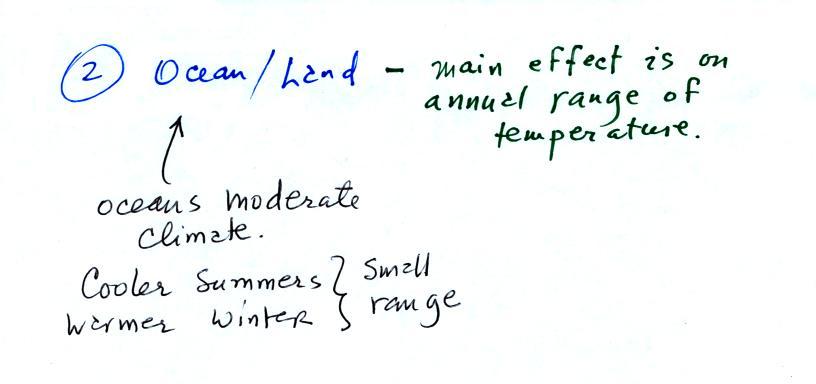
Water has a higher specific heat, it takes more
energy to warm a gram of water than to warm a gram of
soil. Additionally, some of the incoming energy is used
to evaporate rather than warm water. Incoming sunlight
penetrates into a body of water and is used to warm a larger
mass of water. These three factors mean that water will
warm more slowly and won't get as hot during the summer as
land. If you've ever been to the beach in the summer you
probably remember that the sand on the beach gets much
hotter during the day than the ocean water.
The table below summarizes the three controls of
temperature that we have covered so far. One of them
affects both the annual mean and annual range, one affects
just the mean, and the other just the annual range.
One final factor:
Cities on the west coast and east coast of the US
can have very different climates even if they are at the same
latitude and altitude. A cold southward flowing ocean
current is found along the West Coast. The warm Gulf
Stream current flows northward along the East Coast.
Winds at middle latitudes generally blow from west to
east. The city on the West Coast will feel the full
moderating effect of the ocean. The city on the East
Coast will be affected by the Atlantic Ocean but also by winds
blowing across the interior of the US.
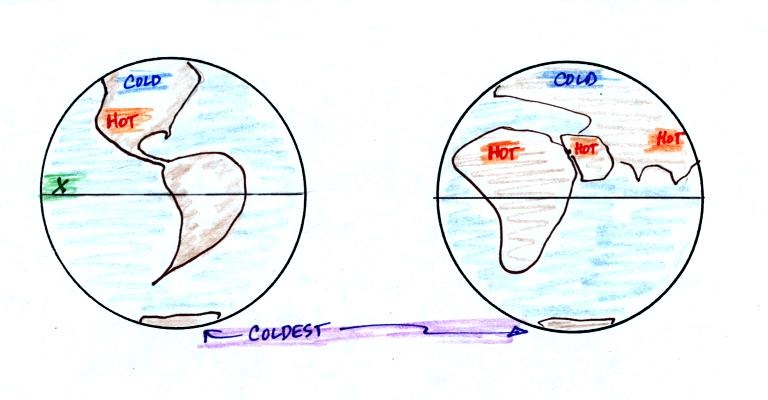
What kind of climate would you expect to find at Point X, on the map above,
near the Equator in the middle of the Pacific Ocean?
We'll answer that question but first you must hear about an awesome
field
experiment
that I took part in several years ago. What is the tie in
with this class? A good part of the experiment was conducted
at a relatively small island near the equator in the middle of the
Pacific Ocean. Now that we have just learned about some of
the factors that control/determine a region's climate you should
understand that there is very little change from summer to winter
in regions like this. I think you'll be surprised
how little change there sometimes can be.
The photograph above appeared on the cover of the April
1994 issue of the Bulletin of the American Meteorological
Society. If you look closely you might recognize one of the
two bald men in the photo. This photo was taken on
Kapingamarangi Atoll (shown on the map below, see pps 81 & 82
in the photocopied ClassNotes), shortly before part of the
research team was to board ship and leave Kapingamarangi.
The remaining group members were going to remain behind and
operate all of the research equipment.
What we were doing on Kapingamarangi? We were a small part
of a much larger field experiment. Our job was to install
the tall white lightning detector at the left edge of the
photograph. We would later travel to Rabaul (on New Britain
island) and Kavieng (New Ireland island) in Papua New Guinea and
install two more detectors. Papua New Guinea would turn out
to be a very different place. Until recently some of the
highland tribes there practiced cannibalism and shrunk
heads. You can also get some very nasty strains of
malaria in Papua New Guinea.
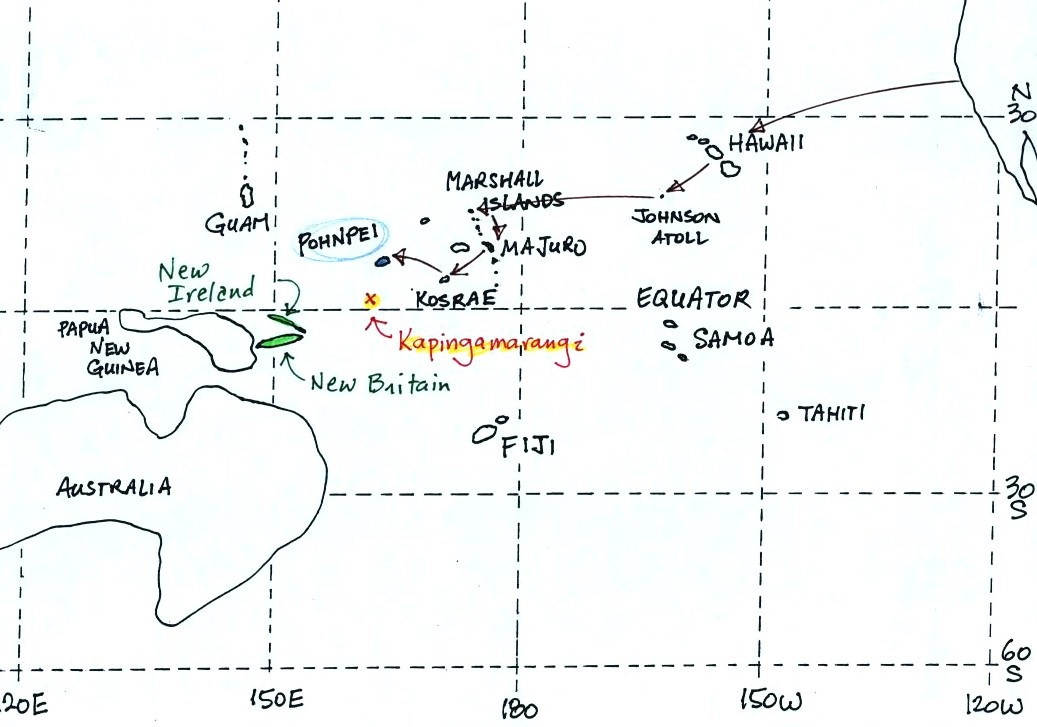
To get to Kapingamarangi you first need to fly to Pohnpei (an
island in the Federated States of Micronesia). The route is
shown above. Then you take a cargo ship for about a 4 day
sail to Kapingamarangi. We had intended to fly to Pohnpei,
set sail for Kapinga the next day, and then spend about a month on
Kapingamarangi. The ship however was delayed 3 weeks.
That gave us plenty of time to visit the island of Pohnpei but
ultimately meant we could only spend a few days on
Kapingamarangi. Here's a picture
of the airport at Pohnpei. Note the runway runs from
one edge of a small island to the opposite edge.
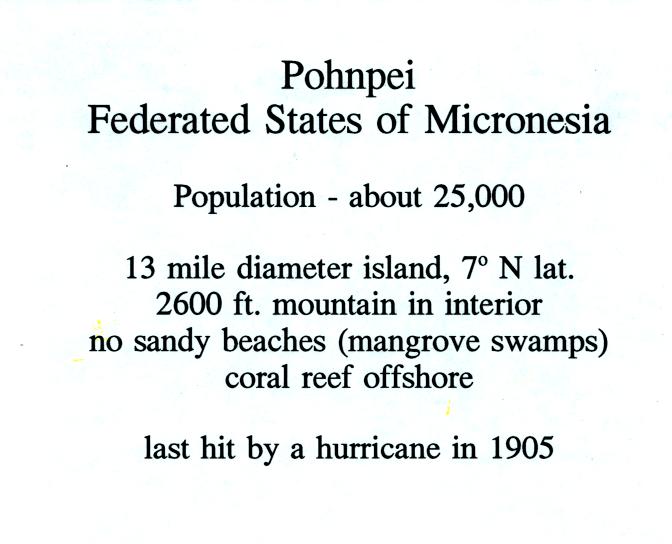
Pohnpei is a fairly large island and, together with some of the
other Micronesian islands, is a popular, world-class, snorkeling
and scuba diving destination. Here's a
picture of Kolonia (the airport is at the left end of the
causeway in the photo), the largest town on Pohnpei. Kolonia
has a weather station that is operated by the US National
Atmospheric and Oceanic Administration (NOAA).
Pohnpei is located at low latitude in the middle of the Pacific
Ocean. Both of those factors will reduce the annual range of
temperature. How
large do you think the annual range is?
The following precipitation data show that Pohnpei is also one
of the rainiest locations on earth
Close to 400 inches of rain may fall in the interior of
Pohnpei. The rainiest location on earth is in Hawaii with
about 460 inches of rain per year.
Pigs are also an important part of daily life on Pohnpei,
Kapingamarangi, and the other islands in Micronesia.
After we had finished our work in Micronesia and had traveled
to Papua New Guinea, I began collecting carved wooden pigs from
some of the local carvers.
The Micro Glory (shown below) sails back and forth between Pohnpei
and Kapingamarangi about once a month. The ship carries
supplies to the people on Kapingamarangi and some other small
islands. They pay for the supplies with pigs (the pigs are
sold on Pohnpei). We shared deck space on the Micro Glory on
the trip back to Pohnpei with 20 to 30 pigs (they were hoisted
aboard in nets)
Most of the lower deck in the photo above (under the hoists)
was occupied by pigs on the return trip. One of the pigs
died on the return trip - that was a very serious matter.
We also had a chance to sample some of the local beverages.
Drinking sakau (as it is called on Pohnpei) turns your mouth
and throat numb. It is supposed to relax you, make you sleep
more fully, and doesn't seem to have any after effects.
Until fairly recently you could buy kava in pill form at local
supermarkets. However, because of reports that it can cause
serious liver problems, that is no longer the case. There
are no reports of liver problems when drinking kava that has been
prepared in the traditional way. Here is a link to a
Wikipedia article on kava.
We never tried betelnut. Areca nuts are wrapped in betel
leaves and chewed together with lime (lime is pretty caustic, that
is one of the reasons I didn't try betelnut). The resulting
mixture is a mild stimulant (some people add tobacco to the
mix). The most interesting aspect, however, is that chewing
betelnut colors your mouth and teeth bright red. You don't
swallow betelnut, you spit it out. You see the bright red
stains on sidewalks and the ground wherever you go. Most
hotels will also have a large sign near the entrance reminding
guests not to chew betelnut inside the hotel. You can read
more about betelnut here.
During the spring semester I sometimes suggest you might
consider a trip to Pohnpei for Spring Break. The last time I
checked a roundtrip flight from Pheonix to Pohnpei (by way of
Honolulu, Guam, and Houston on the return flight) wasrunning about
$3400.
